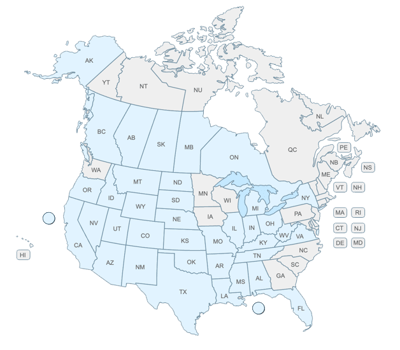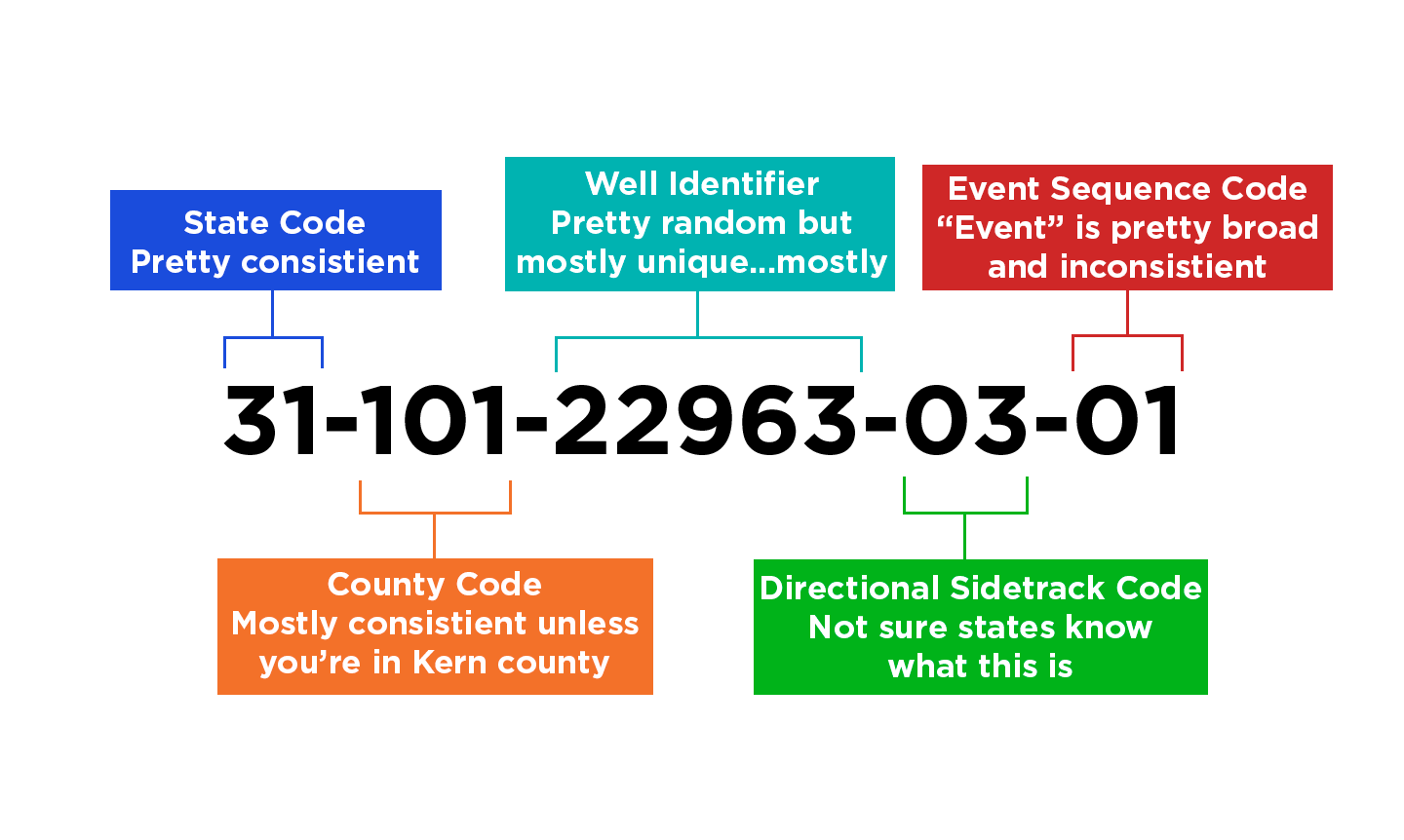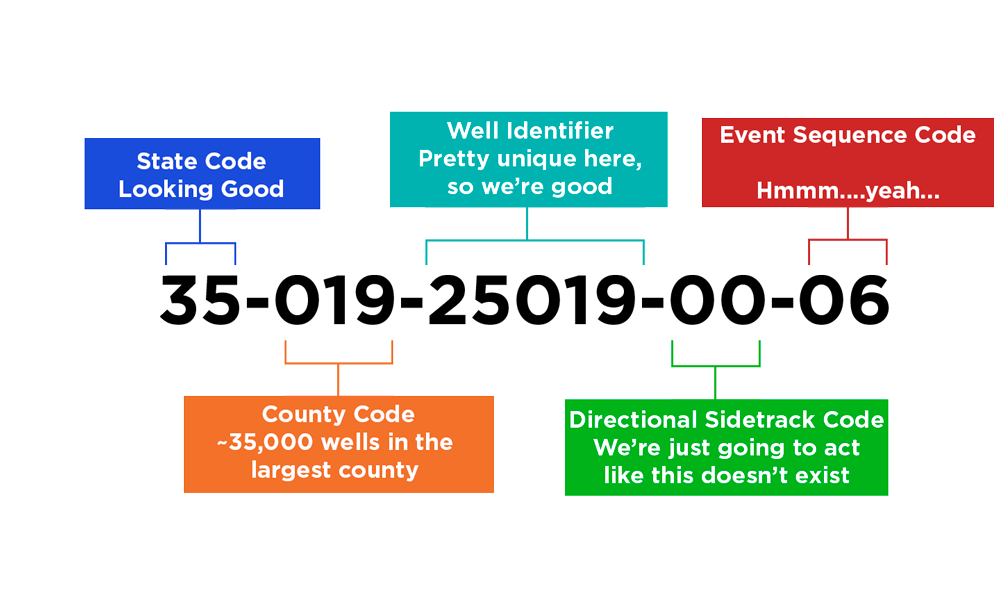Oklahoma's API Issue
This blog is the latest in our series all about our favorite well identifier, the API number. We talk to a lot of users and we find that there is a...
You need data. You need mapping. You need tools to analyze that data. Now you can do everything in a single, easy to use platform.
Perfect for users who need access to basic well level data. If you're only interested in a few wells and currently use state sites, this plan is for you.
The industry didn't start with unconventionals and neither does our data. We cover the full historical dataset across every producing state and province. Don't settle for inferior data, check out our coverage for any state or province you're interested in.


This blog is the first in a series all about our favorite well identifier, the API number. We talk to a lot of users and we find that there is a lot of misunderstandings about what exactly the API number is and is not. This series is aimed at trying to help clear up some of those misunderstandings and give insight into how we handle the API issues and inconsistencies here at WellDatabase.
The Unique Well Identifier (UWI and formerly known as the API number) is a numeric identifier which is assigned to each well drilled for any type of oil and gas operations in the United States. Prior to the adoption of the UWI (API) number, wells were identified by three parts: an operator name, a lease name, and a well number. All three of these parts are subject to change, so there had to be a way to track the changes when any of these three components were altered.
Petroleum Information (PI) developed a numbering scheme for wells in the US for their WHCS (Well History Control System) product in the late 1950’s and first introduced it to industry in the early 1960’s. It was based on an 80-column punch card where the record key was the well identification number.
At the urging of industry, the American Petroleum Institute (API) published a numbering scheme applicable to all wells in the United States in 1966 and the specifications are contained in Appendix A of the Bulletin D12A which is a Well Data Glossary. The recommendation of the API back in the 1960’s was to turn the numbering scheme over to the appropriate state or regulatory agency that was responsible for permitting and overseeing well activities in their area of jurisdiction. That transition happened on January 1, 1967 with most regulatory bodies assigning numbers after that time. In general, PI assigned API numbers prior to January 1, 1967 which made it difficult for the states to use the originally assigned number on subsequent operations (i.e., recompletions, re-entries, etc.). As these historical numbers were made available to the regulatory agencies, the agencies became more involved in using the previously assigned UWI to these wells. Prior to this happening, many agencies, like the Texas Railroad Commission, assigned a temporary number until the previously assigned number could be determined.
The Well Numbering standard was modified over the years but last updated by the API in 1979 and republished in 1982 and 1985. During the period from 1979 through 2013, the complexity of drilled wells increased substantially:
Therefore, it was deemed necessary by industry to update the standard. After several unfinished efforts to update the well numbering standard contained in Appendix A of the D12A Bulletin, the API eventually decided that the well numbering standard was no longer within its scope. A formal agreement on the transfer of custody from the API to the PPDM Association was concluded in 2010. Subsequently, PPDM initiated an industry work group who collaborated to update the standard and that update was published in 2014.
PPDM recommended that the unique identifier should include at least 12 digits with the 13th and 14th digits being optional as described below. It should also be permanent and unique. An example is 31-101-22963-03-01. The "31" means that this well is located in "State Code" 31 which is New York. The "101" means that this well is located in "County Code" 101 which is Steuben County. The "22963" is a "Unique Well Identifier" within Steuben county. The "03" is the "Directional Sidetrack Code" for wells with multiple wellbores and this well has been sidetracked three times. The "01" is the "Event Sequence Code" to indicate how many subsequent operations have taken place and in this well, the 3rd sidetrack was recompleted once. The current Well ID standard states “Avoid using the 13th-14th digits for regulatory filings”. Complete state and county codes as well as the standard itself can be found at
https://ppdm.org/ppdm/PPDM/IEDS/Well_Identification/US_Well_Number_Standard/PPDM/US_Well_Number_Standard.aspx?hkey=91cea626-74d0-4e74-a931-a57ee0e18c34
Some states and regulatory bodies only use a 10-digit identifier to denote the state, county, and unique well identifier within the county but many have adopted the 12-digit or the 14-digit identifier. It should be noted that Indiana does not use the Unique Well Identifier standard and has their own standard for assigning identifiers.

This blog is the latest in our series all about our favorite well identifier, the API number. We talk to a lot of users and we find that there is a...

So there is no bourbon in this blog, but having a glass of bourbon first will surely help you better understand APIs in Kentucky. At least it...

Get Me Back to the Beach - Discover how WellDatabase's oil and gas production software can quickly and effortlessly help you evaluate assets, so you...